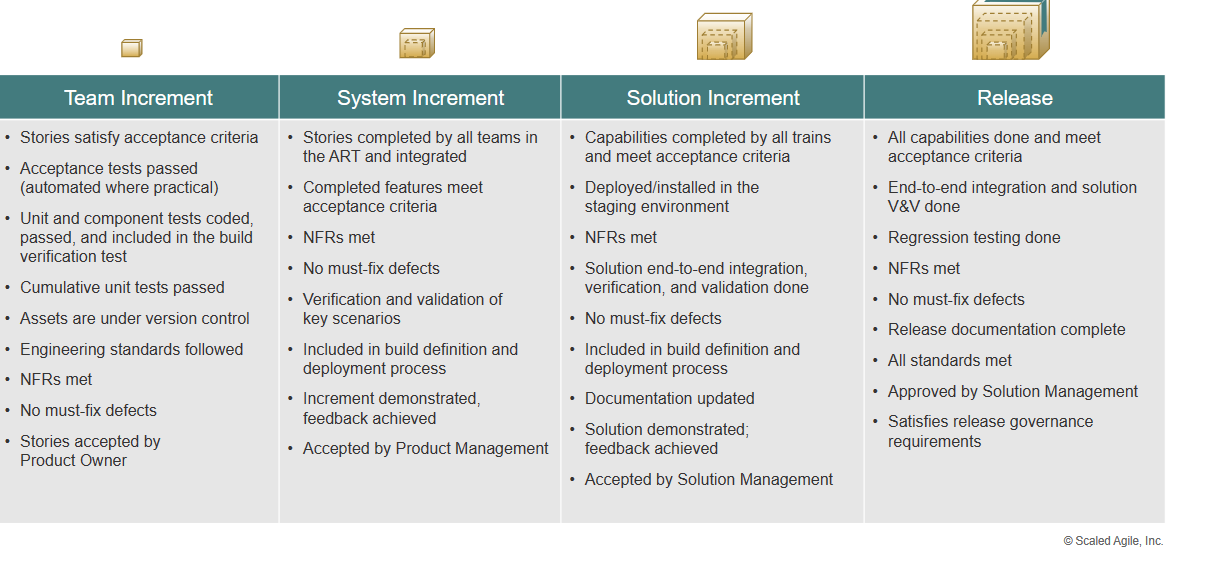
Satyajit Gantayat
Satyajit has broad and deep experience in Agile coaching at the strategic senior executive level wh... Read more
![]() Get Your AI-Enabled Scrum Master Certification for Just ₹1,500 (Save 85%)!
Get Your AI-Enabled Scrum Master Certification for Just ₹1,500 (Save 85%)!
Scrum.Org
SAFe®
ICAgile
Scrum Alliance
Technical Agility
Kanban
Business Analysis
Project Management
AI-Enabled
Scrum.Org
SAFe®
ICAgile
Scrum Alliance
Technical Agility
Kanban
Business Analysis
Project Management
AI-Enabled

Satyajit Gantayat
Satyajit has broad and deep experience in Agile coaching at the strategic senior executive level wh... Read more

"Definition of Done (DoD)" is probably the most important aspect when it comes to producing a piece of working software at the end of the iteration. We can follow all the practices, guidelines, values, and events but still fail to deliver increments useful to the customers at the end of sprints if the Definition of Done is either not transparent or well-defined or teams do not adhere to it.
When we ask a developer if it is done, the question remains ambiguous in the absence of a clear DoD. Without the DoD, it could mean, "Are you done with development" or "Are you done with development & testing" etc.
Also, responses like "almost done,” "it works on my machine,” "only integration pending,” "only security testing pending,” and "only performance improvement pending" defy the entire purpose of being Agile. The Scrum guide clearly defines when, how, and by whom the Definition of Done is defined and continuously refined.
But what about the DoD in the Scaled Agile Framework? When is the DoD defined in SAFe®, and by whom? Who owns the DoD in SAFe? The term "Definition of Done does find its place in SAFe® but is probably overshadowed by one of the 3 dimensions of the “team &Technical Agility” competency; "Built-in Quality.”
SAFe® organizes built-in quality practices into five domains to account for these major differences in context:
SAFe® has a clearly defined Definition of Done at different levels. Each team, train, and enterprise should build their definition. While these may differ for each ART or team, they usually share a core set of items". Here is the Example SAFe® scalable Definition of Done from the SAFe® website.

So, who owns these DoDs at different levels? These could be owned by Agile Teams, System Architects, and Solution Architects. SAFe® doesn't prescribe these ownerships, but we could follow this, so there is no ambiguity in a clear set of DoDs. The DoD is not static, and we continuously work on it to include more stringent criteria and different aspects. The teams could use the below events within the SAFe® framework to improve the DoD continuously.
The Iteration Retrospective is a regular event where Agile Team members discuss the Iteration results, review their practices, and identify ways to improve. The qualitative part of the iteration retrospective is an opportunity for the Agile Teams to discuss the current process, focusing on finding one or two things they can do better in the next iteration. Agile Teams could continuously work on improving the DoD in this event.
Inspect and Adapt is a significant event held every PI. It is a regular time to reflect, collect data, and solve problems. All Teams and Stakeholders meet to inspect and adapt, which is timeboxed for 3 to 4 hours per PI. This could be another opportunity for all the Agile Teams in the ART to share & discuss their own DoDs and see how they could collectively improve the DoD for the entire ART. The RTE and System Architect could collaborate to act as the guardian of the DoD for ART. Again, SAFe doesn't explicitly recommend it, but this could be an option to manage the DoD for an ART.
Coach Sync
Though this meeting is for different purposes, teams could also take this opportunity to discuss how to improve or refine the DoD. It is nowhere prescribed within the SAFe framework on how and when to work on the DoD, but SAFe doesn't prohibit discussing DoD in the events mentioned above. So, it is up to the teams to decide which way works better for them.
The DoD can be defined at multiple levels in SAFe - at the Team, Program and Large Solution Levels. The entire Scrum team can define DoDs.
Typical items include: Code/feature complete, peer reviewed, unit tested, integrated, system/regression testing passed, user documentation updated, deployed to staging environment etc.
The concept is similar, but Scrum defines DoD at the Team-level only whereas SAFe® scales it to large programs and enterprises.
Satyajit has broad and deep experience in Agile coaching at the strategic senior executive level while also coaching and uplifting the capability of teams and individuals. An Agile Coach and SAFe® Practice Consultant with more than 24 years of experience.
WhatsApp Us

We will get back to you soon!
For a detailed enquiry, please write to us at connect@agilemania.com

